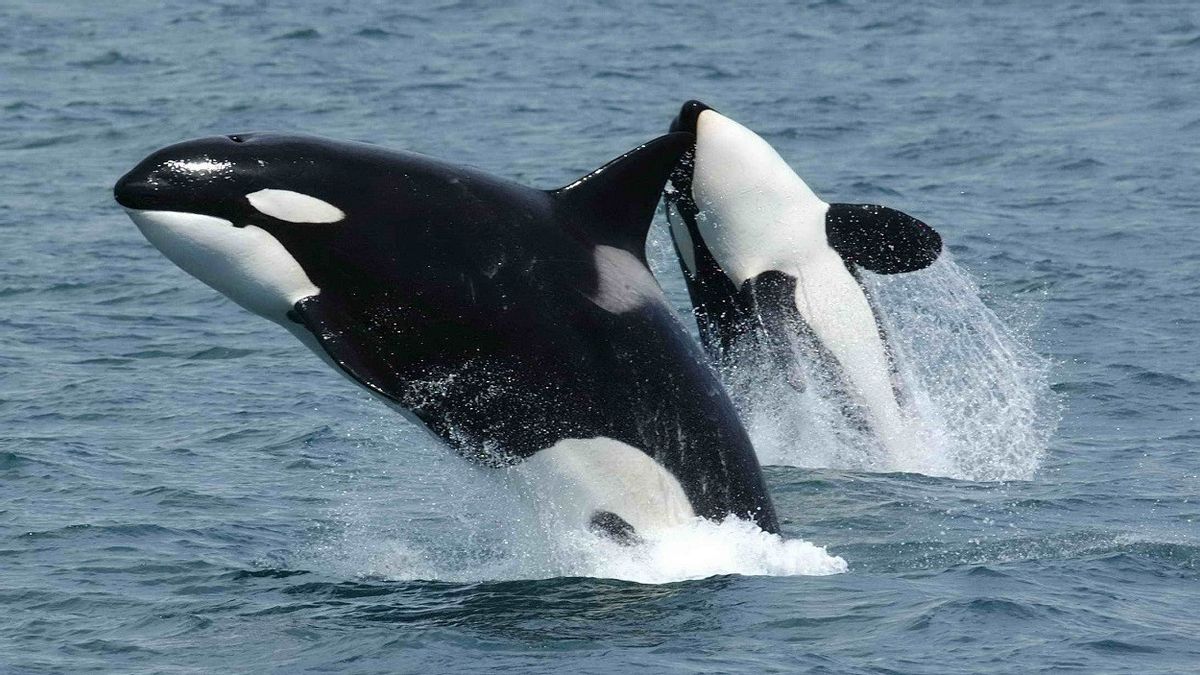JAKARTA - With Arctic sea ice shrinking at a record rate due to global warming, killer whales are expanding their hunting grounds further north, spending more time in polar waters, US scientists say.
But the giant mammals, also known as orcas, are at the top of the food chain, risking creating an "ecological imbalance" in the Arctic by preying on endangered species, a University of Washington study warned this month.
When Agence France-Presse (AFP) visited the sprawling Skjervoy fjord in the Arctic Ocean, 70 to 80 killer whales were spotted congregating in a family clan of about 10, including calves under one-year-old.
Increasingly frequent sightings northwards suggest members of the iconic black and white dolphin family, whose males can grow up to 8 meters (26 feet) and weigh 6 tons, are learning to adapt to the waters of the recently melted Arctic Ocean.
"Through acoustic surveys, we have detected orcas in the Barents Sea in November between Svalbard and Franz Josef Land, so they are clearly following the edge of the ice," Marie-Anne Blanchet of the Norwegian Polar Institute told AFP.
Killer whales, with an estimated global population of 50.000, are found in almost all the world's oceans, feeding on Arctic prey such as beluga whales and, most likely, several species of seals the specialist said.

The whales' changing migration patterns are also related to the fact that their preferred diet, herring, is also moving further north, for reasons that remain unclear.
"They are predators with a great capacity to adapt, so they are opportunistic," Blanchet said.
New hunting grounds have also caused unprecedented conflicts with humans.
In waters off Greenland's capital, Nuuk, four orcas, considered unwanted competitors by local fishermen and hunters, were killed in late November, an act permitted under Greenlandic law.
A University of Washington study presented in early December found that the increased migration of super predators is a consequence of the longer seasons when the Arctic Ocean is ice-free.
"It's not necessarily that killer whales haven't been reported in this area before, but they do appear to have lived in the area for a longer period of time," wrote co-author Brynn Kimber.

The Arctic is heating up three times faster than the rest of the planet, impacting the extent of the ice sheet and the ecosystems that depend on it.
Arctic sea ice, which is also getting thinner, has been shrinking at an average of more than 13 percent per decade over the past 40 years.
By late summer 2012, it had reached its lowest level on record, at 3.4 million square kilometers (1.4 million square miles), nearly half the size it was during the 1980s.
Analyzing acoustic readings over eight years, Kimber's team also detected killer whales in the Chukchi Sea between Alaska and Russia during the months when it used to be frozen, as well as with greater frequency during the summer.
SEE ALSO:
To note, the study warns that hunters, who also pursue prey in packs, are increasingly attacking the endangered bowhead whale, a species left exposed by retreating ice sheets.
"These attacks are likely to increase due to a longer open water season," the researchers said.
The English, Chinese, Japanese, Arabic, and French versions are automatically generated by the AI. So there may still be inaccuracies in translating, please always see Indonesian as our main language. (system supported by DigitalSiber.id)


















